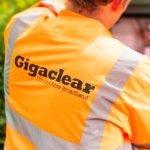One of the Last – 5000th FTTC Broadband Cabinet Built in Scotland
The £442m (public and private investment) Digital Scotland (DSSB) project has announced that Openreach (BT) have just built their 5000th FTTC (VDSL2) broadband ISP cabinet under the project, which will also be one of the “last for the programme” as they switch to focus on Fibre-to-the-Premises (FTTP) technology.
The DSSB project has already helped to extend the availability of “fibre broadband” (i.e. a mix of mostly slower hybrid Fibre-to-the-Cabinet (FTTC) and a little ultrafast full fibre FTTP) services to a total of 936,000 premises (up from 931K in August) – covering 97.5% of Scotland or nearly 95% with access to a “superfast broadband” speed of 24Mbps+ (NOTE: this is not an automatic upgrade, you have to order it from an ISP).
At present this programme is expected to run for a little longer, into 2020, after confirming that it would reinvest £17.8m via gainshare (i.e. public investment returned by BT due to high take-up) to help a further 6,000 premises in remote rural areas gain access to FTTP technology (here). Meanwhile the original rollout plan is drawing to a close and that means an end to hybrid fibre FTTC deployments.
Advertisement
Now one of the last FTTC cabinets to go live – the 5000th in fact (total fibre cable used = 13,000km) – has just been built in Borthwickbrae, near Hawick. From here on out the focus will be on full fibre.
Ben Campbell, Scotland Partnership Manager for Openreach, said:
“Our hard-working engineers and contractors have played a massive part in bringing better broadband to the people of Scotland through these 5000 cabinets.
Our focus now is on reaching the places where a cabinet isn’t the answer, by building full fibre networks capable of gigabit speeds.”
Connectivity Minister, Paul Wheelhouse, said:
“The deployment of more than 5000 street cabinets shows the extent and scale of this nation-wide engineering programme.
In the five years that it’s been operational, more than 936,000 homes and business have been reached across Scotland. Hundreds of small towns and communities, just like Borthwickbrae, have seen the boost which fibre broadband brings and the benefits it generates for businesses, community groups, organisations and individuals.”
Some people despise the flaky speeds and short-term thinking of FTTC technology, although it’s also true to say that superfast broadband would have taken many years longer to reach this level of coverage, and cost billions more, had the project focused upon FTTP instead (at the time the political appetite and funding for full fibre simply didn’t exist). Likewise it has also helped to bring fibre optic cables closer to a lot of rural communities than they ever were before, which may assist the move to FTTP.
In any case we can now wave farewell to FTTC because the remaining contract is laser focused upon building full fibre networks. Similarly the follow-on £600m Reaching 100% (R100) programme is also expected to extend the reach of FTTP even further into remote rural communities.
Originally the R100 project aspired to bring superfast broadband to every home in Scotland by the end of 2021 (March 2022 financial), although that target seems unlikely to be met after the programme suffered around a year’s worth of delays (the supplier announcement is expected very soon).
Advertisement
The Scottish Government‘s Cabinet Secretary for Rural Economy, Fergus Ewing, has staked his job on completing the R100 roll-out on time (here). “If I don’t deliver this by 2021, I think it will be time for [me] to depart and do something else, and leave the job to somebody else. But I can assure you, we’re on the case,” said Fergus in May 2018.
Mark is a professional technology writer, IT consultant and computer engineer from Dorset (England), he also founded ISPreview in 1999 and enjoys analysing the latest telecoms and broadband developments. Find me on X (Twitter), Mastodon, Facebook, BlueSky, Threads.net and Linkedin.
« Openreach Signs Digital Connectivity Charter for Sheffield UK

















































Comments are closed